DNR wildfire pilots have stressful, rewarding jobs
Experts tell us that stress is a killer.
Yet, the small handful of pilots who fly missions for the Michigan Department of Natural Resources said they wouldn’t trade their high-pressure occupations for anything.
Soaring above the smoke and flames of raging wildfires, searching for moose, elk and wolves or aiding investigating conservation officers as eyes in the skies, these pilots are a talented breed.
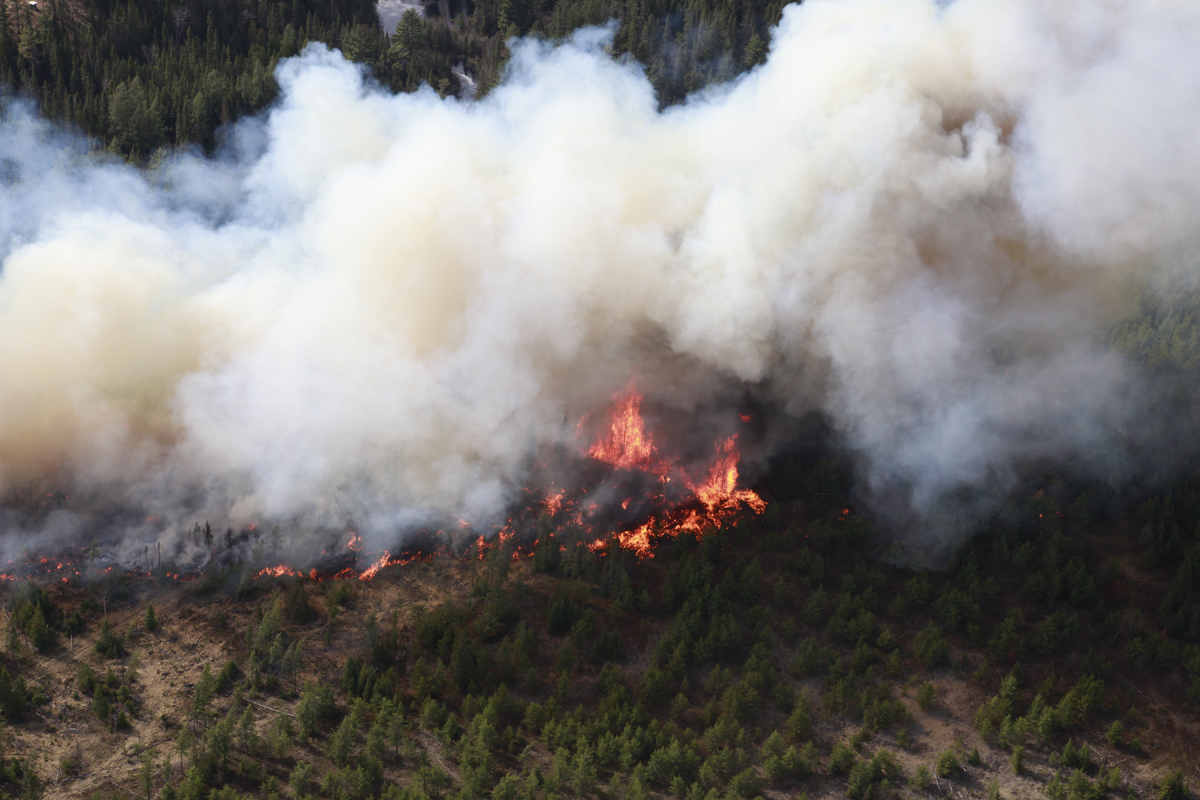 And while these aviators do a lot of work for a number of DNR divisions, their main job is to look for, report on and guide ground personnel who fight wildfires.
And while these aviators do a lot of work for a number of DNR divisions, their main job is to look for, report on and guide ground personnel who fight wildfires.
Think of any of the state’s most notorious recent blazes – Sleeper Lake, Meridian Boundary, Duck Lake and 4-Mile – these pilots have been there for all of them.
“It’s really the bread and butter of what we do,” said Bill Green, the chief pilot at the DNR. “However, it’s not always the majority of our flight hours because fire detection and suppression is weather related.”
Green works out of Roscommon and is in charge of the DNR’s aviation program. The DNR has a fleet of seven planes and employs five full-time pilots with three additional pilots working under contract.
Typically, wildfire season begins in April and its initial stage lasts through mid-June until the forest floors and field grasses turn green. In late summer, fire danger spikes again until autumn rains quench the season’s threat of fire.
During these periods, there are days when all five DNR pilots are in the air, as well as the contract fliers.
“When we get into the peak of fire season, it’s a seven-day-a-week job,” Green said. “We know that.”
The pilots each have their own territories to patrol. Though on days when conditions indicate a low chance of fire, fewer pilots will fly and the ones who do extend the boundaries of their territories.
Assignments are made by DNR Forest Resources Division personnel based on a variety of indicators.
“Our duty officers set the criteria and they monitor temperatures, humidity and winds,” said Green, who studied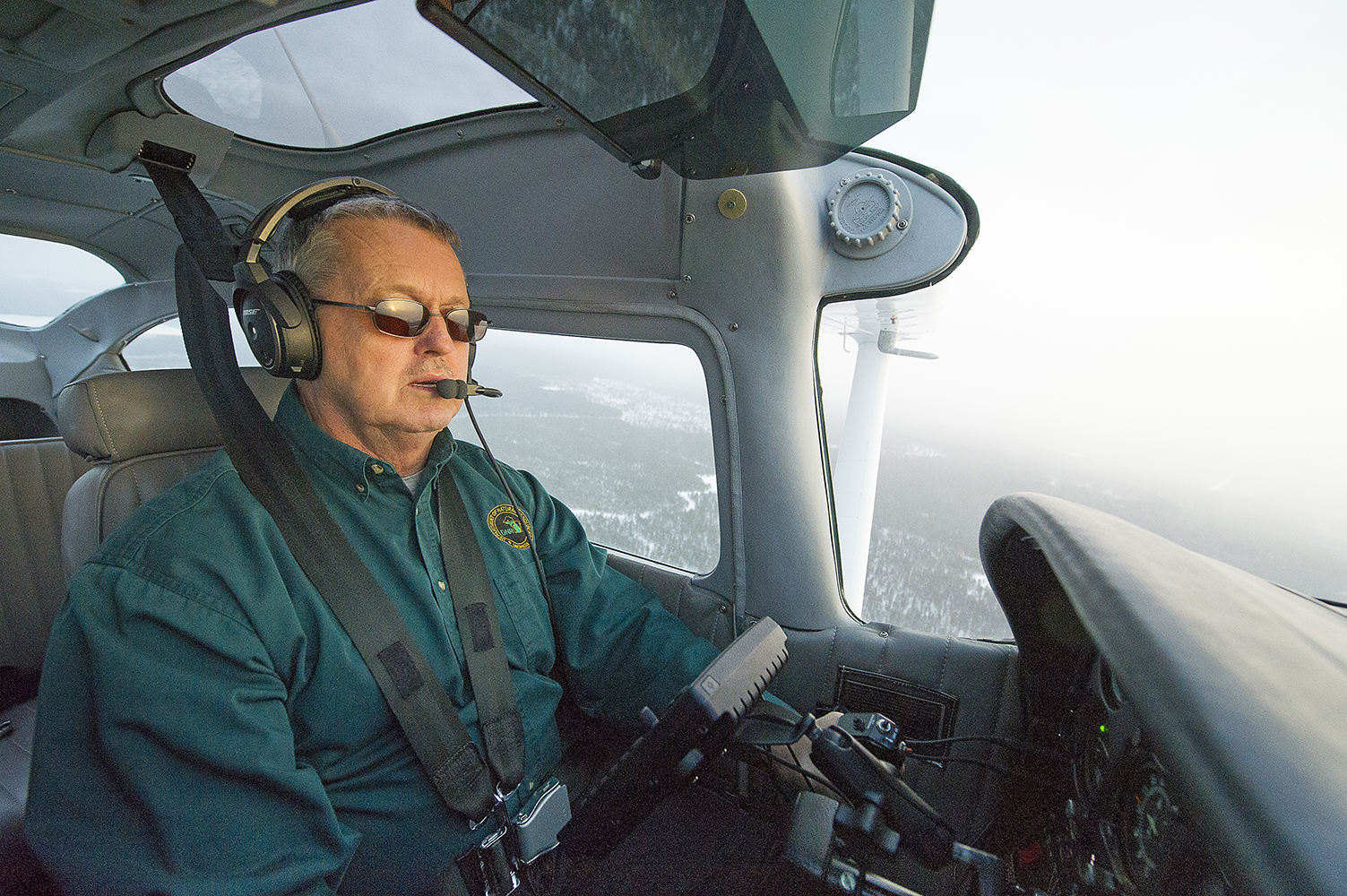 aviation in college and flew seven years as a contract flier before joining the DNR in 1993 as chief pilot. “But in the springtime, it’s not unusual to have rain in the morning and fires in the afternoon.”
aviation in college and flew seven years as a contract flier before joining the DNR in 1993 as chief pilot. “But in the springtime, it’s not unusual to have rain in the morning and fires in the afternoon.”
Pilots “basically look for smoke,” said Gordon Zuehlke, who’s flown out of Escanaba for the DNR for 16 years. He started with the department flying a twin-engine transport plane.
“If you see smoke, you turn toward it and fly toward it. By looking at the smoke you can tell if it (the fire) is large or small,” Zuehlke said. “If it’s a strong fire, you’ll see black smoke as the trees start to torch out. We try to see what’s fueling it – trees or grass – how fast it’s moving and whether there are any structures in its path.
“If you don’t find those residences immediately, so we can get evacuation personnel in there, that smoke may obscure them.”
The key, pilots say, is to get ahead of the fire.
“If there’s half a chance to catch the fire, we do,” Green said.
But they don’t always get half a chance. Green remembers one fire that got away.
“The first thing pilots do is take a photo of the fire,” Green recalled. “I took a photo of a fire that was 3 acres. Six minutes later it was 13 acres. It ran hot and fast and we just couldn’t catch it. I think that ended up at 7,000 acres. We lost some structures, but we didn’t lose any personnel – that’s just a credit to the organization.”
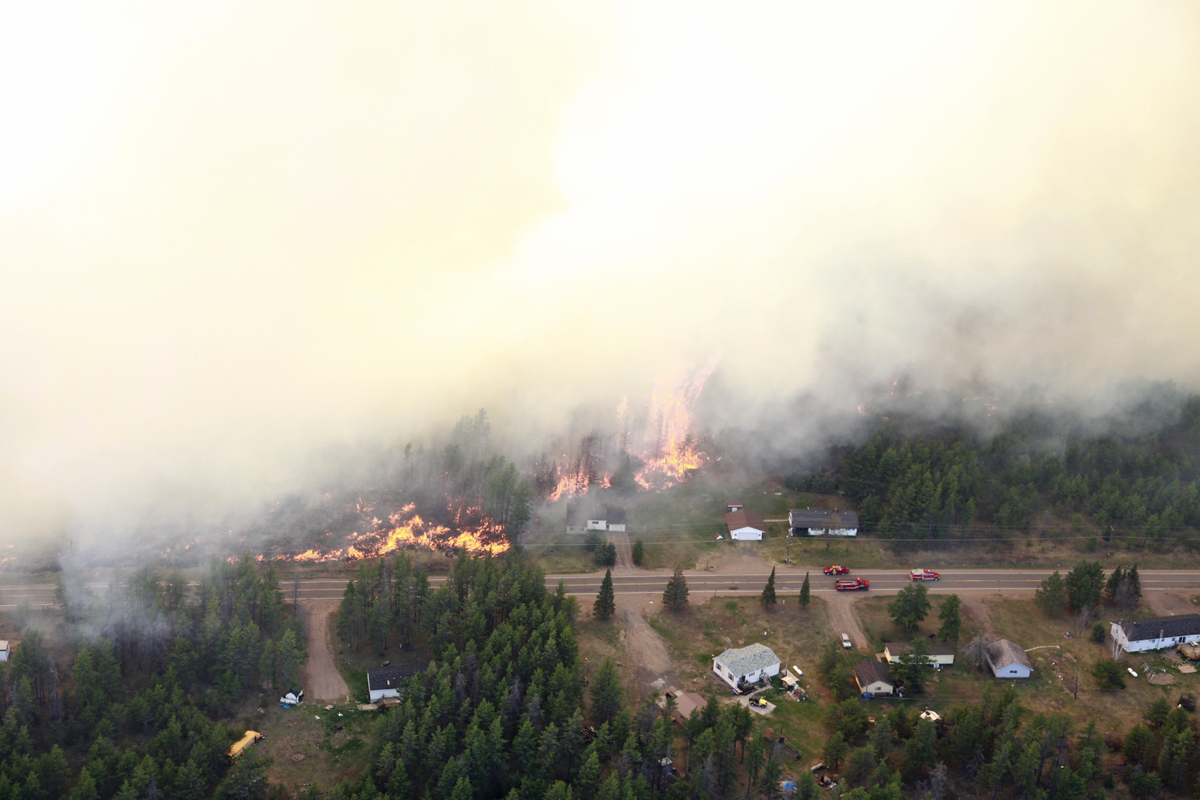 In 2010, the Meridian Boundary Fire destroyed a dozen homes in Crawford County. The previous year, the Black River Falls Fire in Marquette County burned 23 homes and 10 garages, sheds or other outbuildings.
In 2010, the Meridian Boundary Fire destroyed a dozen homes in Crawford County. The previous year, the Black River Falls Fire in Marquette County burned 23 homes and 10 garages, sheds or other outbuildings.
In 2012, the 21,069-acre Duck Lake Fire in Luce County leveled nearly 140 structures, including a well-known fishing lodge at the mouth of the Two-Hearted River.
Evacuations occurred during those fires, but no lives were lost.
“I learned early in my career to stick with fires,” Green said. “If it gets away from you and you’re trying to provide safety for equipment and personnel and you don’t know where they’re at, that can get very stressful – a lot of activity in a short amount of time. If it’s a major incident, do not get pulled off of it for any reason.”
Green said it’s more often that fire crews contain the fire.
“I remember one day we had 26 fires – I never did any detection – I just ran from one fire to another fire to another fire to provide assistance to the ground crews,” he said.
“Days like that don’t make the news. Bad things have to happen before it gets noticed.”
When pilots detect a wildfire, they survey the area to tell responding firefighting crews the best way to get to it. Then they monitor the blaze as those crews spring into action.
“When you’ve got a bunch of guys on dozers fighting fire and you’ve got to keep them safe, that’s what we live for,” said Neil Harri, a 20-year DNR pilot who flies out of Baraga. “That’s the exciting part.”
Harri remembers spotting the Black River Falls fire on a hot, high-wind day in an area that was tough to access. The nearest fire crew was a half-hour away. Within minutes, he called for evacuation procedures for the residences 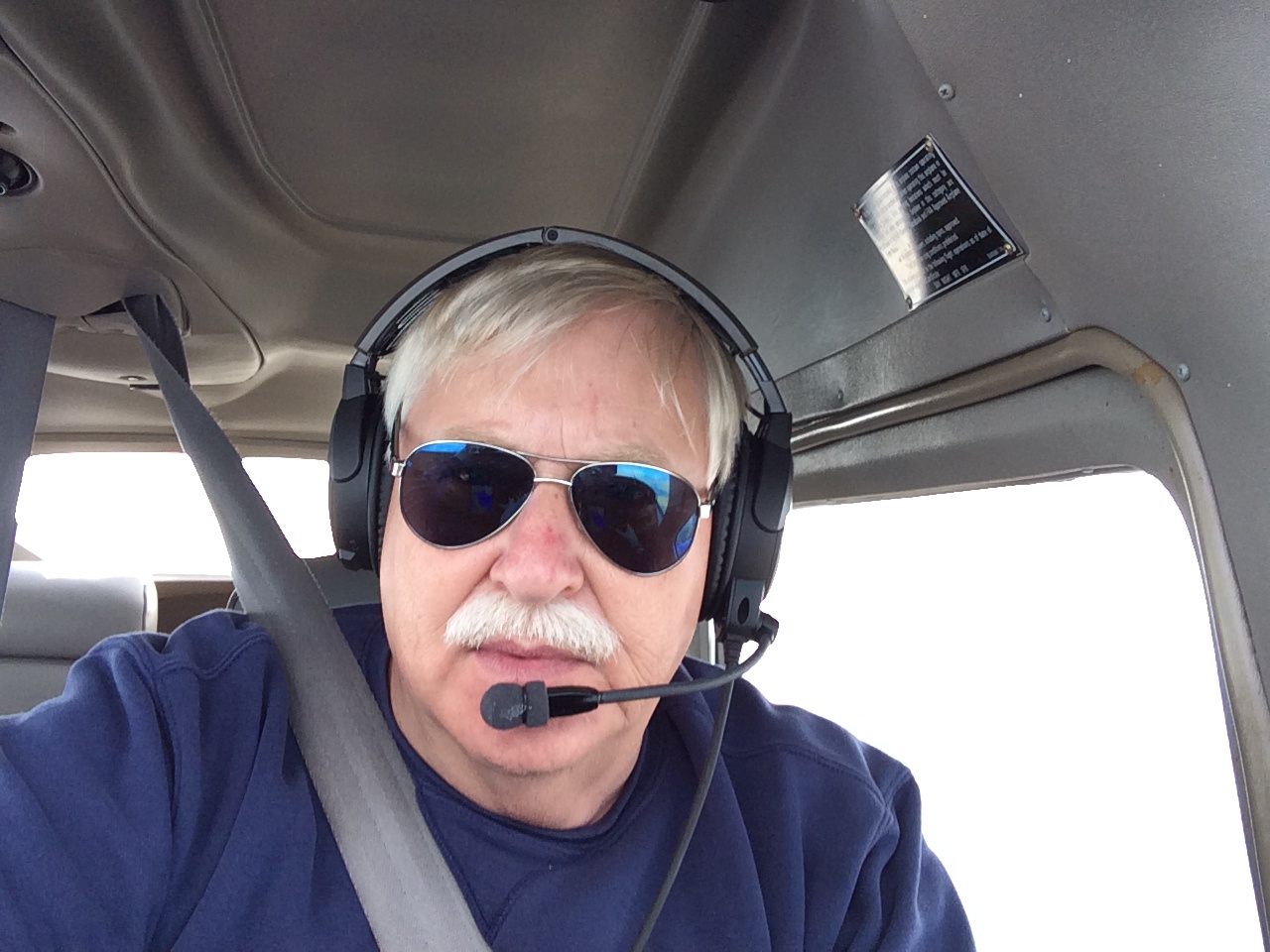 in the fire’s path.
in the fire’s path.
“The importance of having an overhead perspective cannot be overstated,” Harri said. “It made all the difference. It turned out with no major injuries instead of a worst-case scenario.”
Pilots agree; safety is job No. 1.
“During a fire, we keep a look out,” Zuehlke said. “We’re looking for spot fires or for anything that might creep around the crew. We’re doing everything we can to keep them safe.”
Green said, “When you deal with people who are on the ground fighting that fire, they want to hear a familiar voice. They want to know that when I tell them they can drive down a road, they can.”
The pilots have learned over their careers to know what to look for. If there had been thunderstorms the previous night, for instance, they’ll immediately survey areas where lightning strikes were reported.
“You know if it’s a real windy day you want to be looking along power lines,” said Zuehlke, whose career goal was always to be a DNR pilot. “If it’s been real dry, you might want to look around railroad tracks. From our vantage point, it’s kind of like the old fire towers we replaced except we’re a little bit higher and a little bit faster.”
Still, some fires keep burning.
Harri remembers the Tower Lake Fire in Marquette County in 1999.
“The third day of the fire it was reaching the town of Champion and we got a couple of water bombers from Canada,” Harri said. “It saved the day, knocked the head of the fire out. It probably saved three or four remote structures. They were dumping water on woodpiles in yards so they wouldn’t ignite the camps.”
Harri said pilots are always looking for water sources.
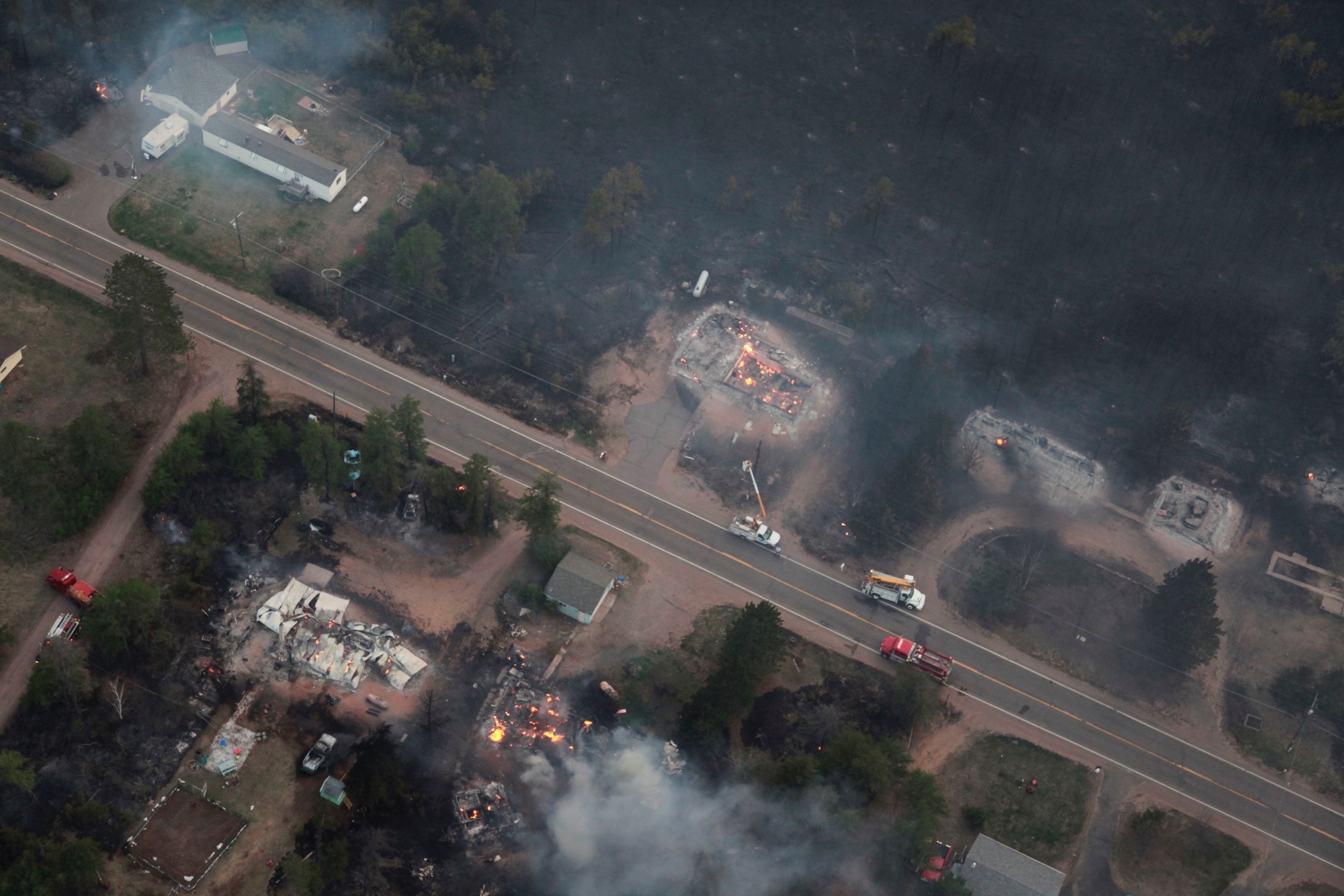 “If the only thing you can get in there is a small truck with 250 gallons of water on it, that can run out quickly,” Harri said. “You have to find a water source that’s accessible to them.”
“If the only thing you can get in there is a small truck with 250 gallons of water on it, that can run out quickly,” Harri said. “You have to find a water source that’s accessible to them.”
These pilots have a knack for making a tough job look easy.
“Sometimes you’re using every bit of talent you’ve accumulated over the years to keep crews safe,” Harri said. “Sometimes the only priority is someone missing in the smoke – that’s not a good feeling. But we know that’s why we’re there – that’s what we take seriously.”
Green said the stress continues well after the fire is extinguished.
“When the fire is finally done for the day, it takes a long time to unwind,” Green said. “You can’t sleep. You get home and you just have to sit and let your body slow down before you can sleep.”
But the stress doesn’t bother any of the pilots enough to give up their jobs.
“I can’t think of anything I don’t like about the job,” Harri said. “It’s a great job really, the greatest job in the DNR, a job no one wants to retire from.”
But retire they will, when the time comes. Green is eyeing retirement now.
“When I hired into this job, I said it was the best job in the world,” said Green, who has logged more than 19,000 hours as a DNR pilot. “And when I retire from it, I’ll still say it’s the best job in the world.
“I’m going to miss 99 percent of what I do.
Read Harri’s recollections from the Black River Falls Fire. Watch Bill Green detail a DNR wildlife mission. See an initial pilot video from last summer’s County Road 601 Fire in Marquette County.
For more information on fire in Michigan, visit www.mi.gov/firemanagement.





